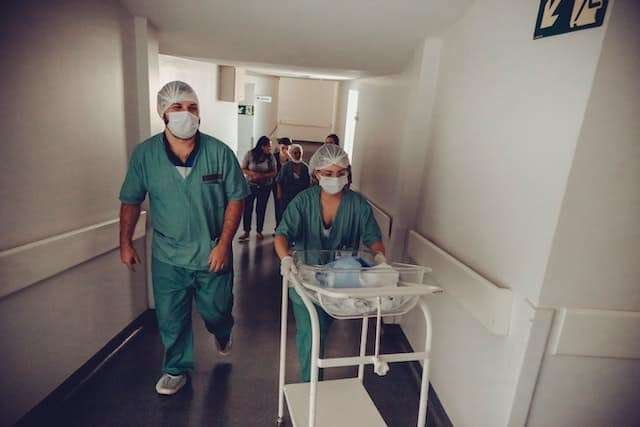Steam sterilization is a simple and effective method of decontamination that kills microbes. As carried out in an autoclave, the fundamental idea behind steam sterilization is to expose each item to direct steam contact for the designated amount of time at the necessary temperature and pressure.
Steam, pressure, temperature, and time are the four variables in steam sterilization. This process is commonly used for reusable medical equipment, dental instruments, and surgical tools. Hospitals frequently use moist heat sterilization (also known as autoclaving) to sterilize the surfaces of various utensils, including hollow objects or wrapped goods.
The procedure is carried out by forcing dry, saturated steam into an autoclave. The process uses steam at 121degC for a specified period. It is an energy-efficient process that yields little waste (entropy).
Time:
During steam sterilization, time is used to maintain the temperature and pressure necessary to kill microorganisms. The type of load being processed affects the typical autoclave sterilizer temperatures and cycle times.
Sterilization is accomplished by exposing each object to direct steam contact at a specific temperature and pressure for a specified time. This allows the stored energy within the steam to transfer to the item.
The primary autoclave cycles are gravity displacement (steam displaces air) and vacuum (steam mechanically removes air). Other cycle types include vacuum, which uses a water ejector or liquid ring pump to ensure air removal.
Steam penetration into porous loads is greatly improved in a vacuum cycle sterilizer. This is because the chamber has no air to prevent steam from reaching areas it would otherwise have difficulty penetrating.
Moisture:
Steam, under pressure, kills harmful bacteria and spores on items placed in a pressure vessel. Heat is effectively transferred to the objects to destroy their protein structure thanks to the moisture in the steam.
Direct steam contact with the contaminated surface is essential for the sterilization process. The energy stored in steam is much higher than in dry air or water at equal temperatures, so the contaminated surface must be covered with saturated steam that has direct contact with all characters.
In a laboratory autoclave, sterilization by moist heat is most commonly performed on medical devices, instrument sets, and hospital linen. Sterilization efficiency is influenced by the availability of saturated steam. Also, the air removal from the chamber and the design of the load being sterilized.
Temperature:
Steam sterilization, aka autoclaving, is a method that destroys microorganisms and bacterial spores by using high temperatures and pressure. These high temperatures and pressures are achieved in a large steel chamber (autoclave) which circulates steam.
The temperature of the steam that is used in this process is crucial to the microbicidal activity. It is usually set at 121degC for a minimum of 30 minutes.
Materials are exposed to this temperature to denature DNA and destroy enzymes to kill microbes on the surface of products. Glass, metals, paper, and some polymers can be sterilized using this method.
Pressure:
The Steam Sterilization Process uses saturated steam under pressure to reach and stay at a specific temperature for the desired time. A key factor is a pressure used during the cycle to ensure that all loads have constant contact with the steam sterilizing agent.
The steam’s ability to kill microorganisms depends on its temperature and moisture content, so it’s essential to use saturated steam during the sterilization cycle. Using dry heat or water at equal temperatures will not be as effective because it does not contain the necessary amount of humidity for the process to be successful.
Saturated steam also has a higher lethality value when compared to water at similar temperature and pressure levels because of the more moisture it contains. This is why it is preferred to other sterilization methods, such as dry heat and boiling water. It is also more consistent in killing microorganisms.







